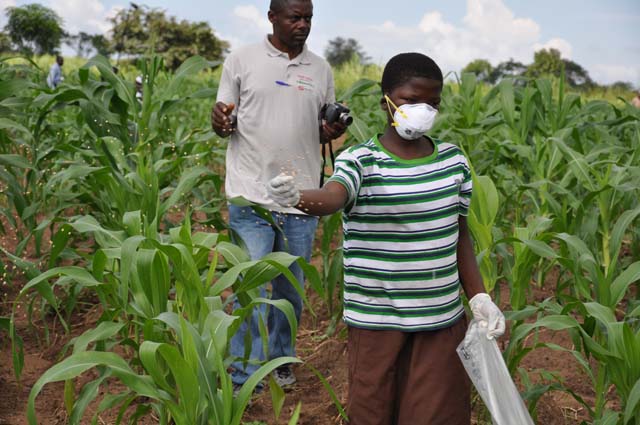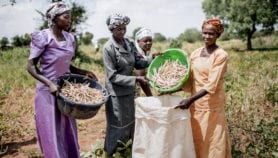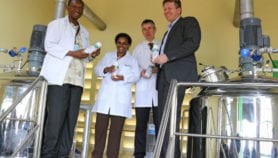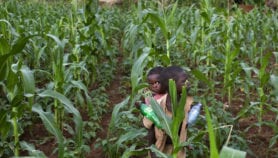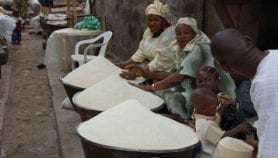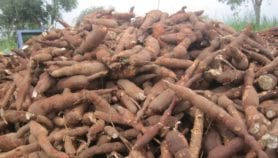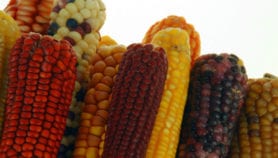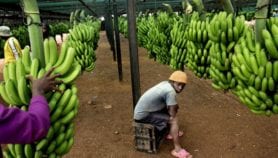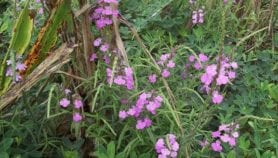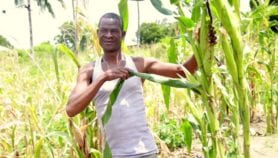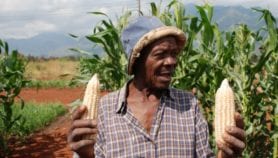By: Duncan Mboya
Send to a friend
The details you provide on this page will not be used to send unsolicited email, and will not be sold to a 3rd party. See privacy policy.
[NAIROBI] A natural, safe and cost-effective product that can cut the deadly aflatoxin contamination in African food crops — such as cassava, maize, rice and yam — and new tools could help control the menace, according to scientists.
Aflatoxins are poisons produced by some strains of a fungus called Aspergillus flavus. African economies could lose US$450 million each year because of aflatoxin contamination, according to the International Institute of Tropical Agriculture (IITA).
Scientists from IITA in collaboration with the United States Department of Agriculture and the African Agricultural Technology Foundation have developed a biological control product called aflasafe with strains of A. flavus that do not produce aflatoxin.
“Once appropriately applied before plants produce flowers, these native atoxigenic [non-aflatoxin-producing] strains completely exclude [or displace] the aflatoxin producers.”
Charity Mutegi, IITA, Kenya.
“Once appropriately applied before plants produce flowers, these native atoxigenic [non-aflatoxin-producing] strains completely exclude [or displace] the aflatoxin producers,” says Charity Mutegi, country coordinator for the aflasafe project at IITA, Kenya. She was speaking during a media briefing on aflatoxin control held in Nairobi, Kenya, last month (13 November).
Mutegi says that IITA recommends application of10 kilograms of aflasafe per hectare by hand on soil two to three weeks before the flowering stage of maize to prevent the aflatoxin- producing fungus from colonising and contaminating the crop in the field and during storage.
She says the technology has been tested among 800 farmers in Kenya with efficacy of 80–90 per cent.
According to Mutegi the chemical has been presented to Kenya’s Pest Control Products Board for certification and will be out in the market by next year. Farmers will have to buy it but the price is yet to be decided.
The Kenya-based Capacity and Action for Aflatoxin Reduction in Eastern Africa (CAAREA), a regional platform is developing additional tools to control aflatoxins.
Jagger Harvey, the project team leader and senior scientist of CAAREA, tells SciDev.Net: “New sampling and diagnostic strategies such as kernel sorter will soon be tested in the field by the project team of 23 scientists from seven countries — Burundi, Cameroon, Ethiopia, Kenya, Nigeria, Rwanda and Tanzania — to identify the best tools suited for use on the ground in Africa”.
Harvey discloses that they have developed aflatoxin risk maps across Kenya and Tanzania that will serve as the first of its kind to visualize aflatoxin risk and test likely impacts of different interventions.
He says that the platform is also adapting an information and communication technology-based modelling tool that can predict where aflatoxin risks are emerging during the farming season. The team is also validating mobile diagnostic and decontamination technologies for use in African laboratories and in the field.
According to Erastus Kang’ethe, a professor and food safety expert at the University of Nairobi, Kenya, multiple approaches such as use of good storage facilities and cheaper diagnostic tools could help control aflatoxin.
“We need to move fast in finding solution to aflatoxin infection as it leads to stunting in human being’s growth and cancer to people who consume maize [and other contaminated food crops],” Kang’ethe notes.
This article has been produced by SciDev.Net's Sub-Saharan Africa desk.


